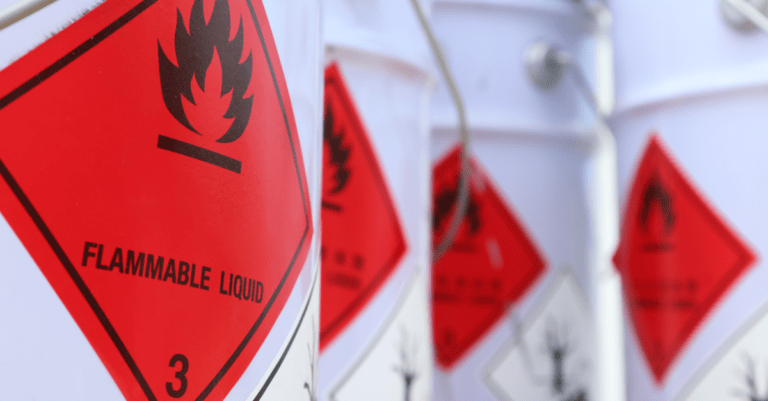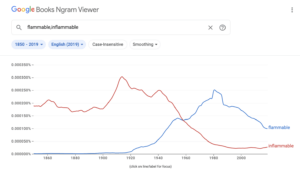Many people mistakenly thought that “inflammable” meant “resistant to burning,” which it doesn’t.
The ‘-in’ prefix has multiple meanings
The “in-” prefix usually has a negative meaning, as in “indelible,” which means “can’t be deleted” and “indefinite,” which means “not defined.”
But the “in-” prefix has other uses too. For example, it can mean “in, into; to, towards,” according to the Oxford English Dictionary. That’s what it’s doing in words such as “intoxicate” and “indent” — it’s describing metaphorical movement toward being “toxicated” and “dented” — and that’s what it’s doing in “inflame” (the base of “inflammable,” which essentially means “able to be inflamed”). The “in-” prefix creates a meaning for “inflame” of something like “to cause to burst into flame.” These prefix meanings can be quite broad, but the point is that “in-” doesn’t have to be negative.
‘Flammable’ is about safety
According to the Merriam-Webster Dictionary of English Usage, the National Fire Protection Association felt that people thinking inflammable things wouldn’t burn was enough of a safety problem that they starting using the word “flammable” instead. And that’s why “flammable” is so popular today. In the 1920s, almost nobody used the word “flammable,” but by the 1970s, it had overtaken “inflammable.”
That’s your Quick and Dirty Tip: “flammable” and “inflammable” mean the same thing, and they’re both proper words, but for safety reasons, “flammable” is the better choice.





